Choose one of these FREE Quality Management Books!
We’d like to offer you a free ebook of your choice simply for visiting our website. Simply choose from any of these six books and complete the request form. All it takes is a company email and answers to a few simple questions. Book descriptions can be found below.
- Total Quality Management: Principles & Practice for Organizational Effectiveness
- 5 Whys: One of the Simplest and Fastest Problem Solving Ways to Get to the Root of the Problem
- The Best Total Quality Management Essay
- CARE to Lead: How to Master and Implement Four Keys to Leadership, Communication, Accountability, Relationships, and Example of Excellence
- Measures of Success: React Less, Lead Better, and Improve More
- The Integrated Enterprise Excellence System: An Enhanced, Unified Approach to Balanced Scorecards, Strategic Planning, and Business Improvement
I’m Ready to Make My Selection
Total Quality Management: Principles & Practice for Organizational Effectiveness
Select Total Quality Management
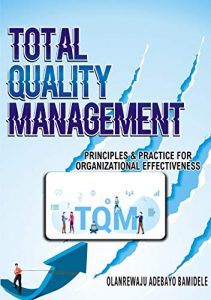
This book presents Total Quality Management (TQM) as a term used to describe a management approach to quality improvement through the formulation and implementation of an organization’s quality policy and procedure in view to a long-term customer satisfaction. It stresses the fact that TQM is based on all members of an organization participating in improving processes, products, services and the working culture.
The concept of quality and cost of poor quality has been thoroughly explained in this book. Keys to the successful implementation of Total Quality Management (TQM) are explained in details. This book contains details on Quality Assurance, Quality Control and Improvement practices, tools and techniques. Likewise the principles or elements, and phases of Total Quality Management (TQM) have been explained.
Individuals, supervisors, middle and top level managers who wish to gain or improve their knowledge of Total Quality Management (TQM), and apply them to their businesses in order to improve their business culture with the goal of gaining and retaining customers through high level of customer satisfaction, thereby maintaining a competitive advantage in this ever competitive business world would find this book the MOST appropriate one.
At the end of the study of this book, readers would have learned the principles and practices of Total Quality Management (TQM) required for the effective operation of their businesses and organizations.
5 Whys: One of the Simplest and Fastest Problem-Solving Ways to Get to the Root of the Problem
Select 5 Whys

This book is intended for anyone who wants to know about the 5 Whys and how to use them.
The Five Whys tool is considered as the number one tool in ease of use in recognizing the truth of the problems and revealing its causing secrets, as it is considered a complement to many quality tools and systems. Although, there are few who can explain it well, and some even talk about it as if nothing.
If you are a student, worker, manager, nurse, teacher, unemployed or anything else and you encounter problems and want to solve them from their roots in an easy and effective way, then this book will help you put your feet on the route of knowledge.As a help, I added templates to help you sort ideas and find causes.
[From the author] When I wrote this work, I tried to keep away from prolonged unhelpful explanation or the use of theorizing. I relied on my accumulated experience over more than 20 years in the field of quality to summarize this topic in an easy, smooth and possibly new way.
In this book, you will learn about:
- Definition of the problem.
- How to represent the problem as a tree.
- Learn about the Five Whys.
- Types of the Five Whys: simple, tree, in an organization.
- When to use each type or method.
- Detailed usage steps.
- When to stop asking questions.
- How to know that you have reached the root of the problem.
- Attributes that the problem-solving persons should have.
- How to benefit you as a leader.
- How to benefit you in your job.
- Rocket and the fly theory in dealing with problems.
- Examples, exercises, models, etc.
The Best Total Quality Management Essay
Select Best Total Quality Management Essay
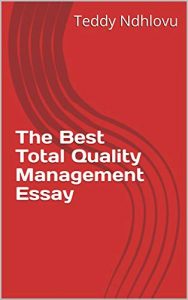
The business environment has undergone enormous changes, leading to a focus on total quality management, which has become one of the essential strategies that can be implemented in any organization.
Through TQM an organization can achieve a competitive advantage. Due to the continuous increase in the global business market, organizations are obliged to keep improving the quality of their products and services to survive in the face of competition. To up the performance of the organization, and to improve customer satisfaction, various total quality management practices have been implemented. TQM is based on the premise that all the staff of an organization must work with each other to deliver high-quality products and services to meet customer demands. A strategy that can be implemented to reduce errors is through the control of manufacturing processes. Total Quality Management consists of various quality instruments and techniques, as well as various values and beliefs that all the staff are of the same organization share (Salis, 2014).
CARE To Lead: How to Master and Implement Four Keys to Leadership: Communication, Accountability, Relationships and Example of Excellence
Select Care to Lead
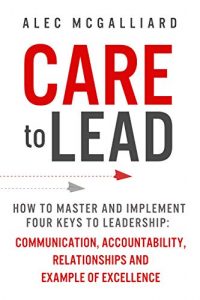
Would you like to grow your leadership skills but are tired of the endless, dense and droning volumes available on the market today?
Good news: Alec McGalliard is here to help. With his new book, CARE to Lead: How to Master and Implement Four Keys to Leadership: Communication, Accountability, Relationships and Example of Excellence, he offers practical skills and repeatable tools you can use to improve stat, all in one slim volume that won’t break your brain.
The practical, commonsense leadership tools you’ll discover within CARE to Lead prioritize continuous learning through self-reflection and a desire to improve.
With them at your side, you can enhance your leadership qualities and learn to lead by example.
The secret? CARE – Communication, Accountability, Relationships and an Example of Excellence. This handy-dandy formula offers accessible leadership principles for your own education, not to mention passing on to others to cultivate the next generation of leaders.
What exactly will you learn in this book?
- What the CARE leadership tools are and how they work
- The three aspects of your job you must care about in order to truly fulfill CARE
- The negative outcomes stemming from poor communication (example: we all hate rumors!)
- The simple steps you can take to improve your conversation and delivery
- The major misconception most people hold about accountability
- How to establish an environment of integrity even as a young leader
- How to manage the inherent fragility of relationships
- What Albert Einstein has to say on the example of excellence … and how you can put it to work for you
- How to use all of these tools in real-life situations
- The bottom line skills and tools you need to succeed in the workplace, the boardroom or just plain life
The fact of the matter is, only when you lead by example and consistently work to develop a strong leadership habit will you become the boss, manager or mentor you were born to be.
If you’re tired of leadership books for women and men alike that fail to emphasize the concrete and the actionable, and are instead looking for meaningful leadership coaching that doesn’t take years to learn, this is the book for you.
McGalliard is humble and earnest, willing to talk about his mistakes and the leadership code they helped him develop – including what doesn’t work. He’s been in your shoes, and will probably be there again, and that’s okay. As long as you take leadership in organizations seriously, you’ll get there.
So just who is Alec McGalliard to teach you all this? Simply put, he’s been a leader for more than half his life. He is a veteran of the United States Navy Submarine Force and has a 33-plus year career in nuclear energy, and as such, has been a manager and mentor at many levels. The result: a slim, accessible guidebook you can keep on hand for life.
Measures of Success: React Less, Lead Better, Improve More
Select Measures of Success
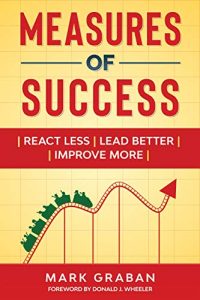
STOP REACTING TO NOISE. START RESPONDING TO SIGNALS.
Measures of Success shows business leaders how.
A PRACTICAL GUIDE FOR HOW TO MANAGE YOUR METRICS
Organizations depend on metrics for their business. Question is, are they helping people do the right things? Or, encouraging them to overreact to every uptick, downturn, and change?
In other words, reacting to noise.
Noise is present in every metric. But, it’s our reaction to noise that causes waste and stress. Too often, people don’t recognize this.
Like feeling stuck on a rollercoaster you no longer enjoy.
We do and explain things that don’t help us improve. At the cost of doing things that do. No need to be jittery about every change in a metric. Not by a long shot.
Measures of Success shows a better way to chart and manage your metrics, in any organization or setting. For your business processes and activities, you need to know what’s working, what’s not, and what to change. And why. Then, you can determine what to stop doing, what to start doing, what to keep doing.
So you can…
Jump off the metrics rollercoaster, by responding to signals.
Systematically. Sustainably.
Learn how to identify meaningful signals in a metric. To respond just right.
Or perhaps, not at all.
You’ll learn how with methods easy to understand, making it obvious what activities to do next. Loads of vivid stories and clear examples from healthcare, software companies, and more. With compelling case studies from the news and personal lives, too.
“What gets measured gets managed.”
We’ve all heard that. But did you ever learn how to manage a metric? This ain’t about gaming the system or fudging the numbers. This is about delivering real value, understood by everyone, and proven with data.
Learn a better way to manage your measures.
WHO IS MEASURES OF SUCCESS FOR?
EXECUTIVES AND LEADERS
…in healthcare, manufacturing, and services. Who know what to measure, and are now ready to learn how to manage those measurements. And…
WILLING TO…
- Challenge and change the way things are done today
- Motivate workers to think and do them better tomorrow
- Coach people, versus telling them what to do
- Be responsible for results, not hold others accountable
- Encourage people to collaborate, not compete
- Help people sleep better at night because they’re improving their work during the day
TO BE CLEAR
Measures of Success is not for leaders who’d rather give orders. Then, blame others when things go south. That whole hit the target or else thing… won’t create real change, nor real value. But that ain’t you, right?
AFTER READING MEASURES OF SUCCESS
…you’ll be able to answer three critical questions for your business.
1) Are we achieving our target?
And, how often? Occasionally? Consistently?
2) Are we improving?
And, can we predict our future performance?
3) How do we improve?
And, when do we react? When do we ignore? When do we improve?
…AND HOW CAN WE PROVE WE’RE IMPROVING?
How would you feel if you could answer these questions for your business?
Measures of Success shows you how.
PROCESS BEHAVIOR CHARTS
This book teaches you a proven method for filtering out noise, so we can identify signals. This means we waste less time chasing our tail and more time responding to signals that really matter, heading off small problems before they become big, or showing that we’ve boosted performance in in significant and sustainable ways.
The Integrated Enterprise Excellence System: An Enhanced, Unified Approach to Balanced Scorecards, Strategic Planning, and Business Improvement
Select The Integrated Enterprise Excellence System
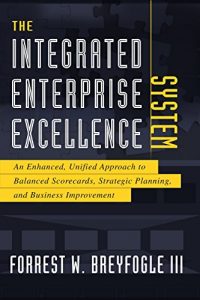
Organizations can waste much resource with:
1. Strategy creation and execution: Organizations can spend much time with strategy creation, where often it is difficult to interpret what should be done to address passed-down strategies. Also, the strategy creation process often does not systematically blend analytics with innovation to determine the best place to target strategy-improvement efforts.
2. Scorecards: Red-yellow-green scorecards may seem to be a good management practice; however, these scorecards can lead to much firefighting. Also, traditional forced scorecard balance using the balanced scorecard categories of financials, customer, internal business process, and learning & growth can lead to unfavorable behaviors. Scorecard balance is important (e.g., don’t want to target on-time delivery while sacrificing quality); however, forced balance can be detrimental.
3. Process improvement systems: Problem-solving deployment systems such as Six Sigma, Lean Six Sigma, Lean Kaizen events, and Total Quality Management (TQM) typically have a push-for-project creation system (e.g., let’s brainstorm for what projects to work on next). These systems often lead silo-improvements that can sound good but do not have much, if any, impact on the big picture. A business system which has 30,000-foot-level operational metrics improvement needs pulling for targeted-improvement-projects, which benefit the whole enterprise.
Integrated Enterprise Excellence (IEE) introduces a new organizational governance system that integrates analytics with innovation. The IEE system shows business leaders: what to measure and report; when and how to report it; how to interpret and use the results to establish goals; how to orchestrate work activities; and how to develop strategies that are consistent with established goals. These strategies ultimately lead to specific projects that enhance organizational focus and success.
This book discusses how the application of IEE methods, tools, and techniques can overcome the enterprise management challenges of the twenty-first century and the limitations of traditional business management practices.
Additional IEE publications that address traditional lean Six Sigma deployment issues:
Lean Six Sigma organizational process deployments often are not long-lasting.
Integrated Enterprise Excellence (IEE) was created to address this problem.
IEE details are provided in the following books:
•Integrated Enterprise Excellence Volume I provides a description of the benefits of the IEE system in a golfing story format in which four MBA friends discuss process improvement when play golf.
•Integrated Enterprise Excellence Volume II describes the 9-step IEE business management system, which among other things uses an IEE value chain to align 30,000-foot-level predictive scorecards with the processes that created them. Integrated Enterprise Excellence Volume II also describes the details of determining where lean Six Sigma improvement projects should focus so that the business as a whole benefits.
•Integrated Enterprise Excellence III provides the step-by-step details for executing improvement efforts that enhances organizational performance metrics, which are important to the business.

